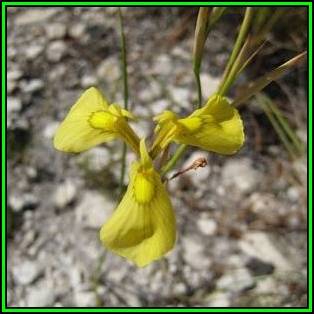
Moraea cooperi Seeds - Rare South African Endemic Perennial Bulb - Flat Ship Rate - New
Check my rate
| Main centres: | 1-3 business days |
| Regional areas: | 3-4 business days |
| Remote areas: | 3-5 business days |

| Main centres: | 1-3 business days |
| Regional areas: | 3-4 business days |
| Remote areas: | 3-5 business days |
The genus Moraea belongs to the Iridaceae family and is a close relative of the genus Iris. It is accepted that it evolved independently from Iris itself, which is restricted to the Northern Hemisphere. Therefore, it is strictly an African genus extending from Nigeria and southern Ethiopia, into the African highlands down to the southern tip of Africa where winter rainfall is predominant. Many are indigenous to South Africa. It is in the winter rainfall area where one finds the highest concentration of Moraea species. They have long narrow basal leaves, sometimes only one per corm and large yellow, pink, orange, or bicolor flowers with six fairly equal tepals.
Moraea cooperi is a rare South African endemic species from the Western Cape Province where it is found growing on seasonally wet flats, in sandy soil or rocky alluvium at the base of high mountains from Tulbagh to Worcester to Caledon and Stanford. It was previously known as Gynandriris apetala, Gynandriris stenocarpa, Moraea apetala and Moraea stenocarpa. It grows to 25cm tall with branched stems. During summer it bears pale yellow 3-tepalled flowers with delicate purple veins.
|